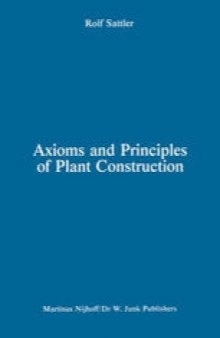بدیهیات و اصول کارخانه ساخت : مجموعه مقالات سمپوزیوم در کنگره گیاه شناسی بین المللی ، سیدنی، استرالیا ، اوت 1981 برگزار شد Axioms and Principles of Plant Construction: Proceedings of a symposium held at the International Botanical Congress, Sydney, Australia, August 1981
- نوع فایل : کتاب
- زبان : انگلیسی
- نویسنده : R. Sattler (auth.)
- چاپ و سال / کشور: 1982
- شابک / ISBN : 978-94-009-7638-2, 978-94-009-7636-8, 90-247-2714-6
Description
This volume presents the proceedings of a symposium which I organised for the Developmental Section of the Xlllth International Botanical Congress at Sydney, Australia on August 26, 1981. The paper by Professor T. Sachs, which was received too late for inclusion into the symposium at Sydney, was added to these proceedings because of its direct relevancy and importance. The aim of the symposium was to state in an explicit and comprehensive fashion the most basic axioms and principles of plant morphology and morphogenesis. An awareness of these axioms and principles is of paramount importance since they form. the foundations as well as the goal of structural developmental botany. Both teaching and research are predicated on them. The Introduction by the editor briefly examines the meaning of the concepts "axiom", "principle", and "plant construction". The comprehensive paper by Dr. G. Cusset, a unique historical overview, explicates 37 principles of 5 major conceptual systems and many subsystems. The extensive analysis includes a genealogy of ideas and ways of thinking of major authors ranging from philosophers and naturalists of antiquity to recent investigators of plant form and structure. The bibliography of Dr. Cusset I s paper comprises ca. 700 references. The contribution by Professor H. Mohr focusses on modern principles of morphogenesis and provides a penetrating analysis of scientific explanation in developmental biology. The universal principles (laws) described in this paper apply to all living systems, whereas the more specific principles are limited to plants or only higher plants. Professor T.


